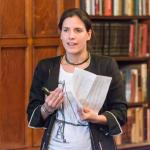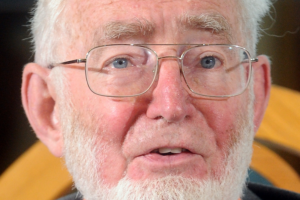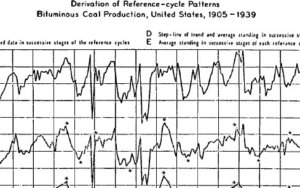Looming behindthe aforementioned narratives of postwar economics is a notion – economics as engineering – which at times appears as a metaphor and at times stands for a straight depiction of economists’ professional milieu and practices. Also, it is used to characterize both highly theoretical undertakings element and some everyday engagement with policy making. As exemplified by Mankiw’s remark that, all but one top selling macro textbooks from the 1980s as well as the 2000s wee written by MIT economists, MIT is one relevant site for the investigation of the nature and significance of the “engineering” comparison. And it is indeed a pervasive thread in many of the papers to be presented at the HOPE conference tomorrow, some filled with allusions the technical, modeling, applied, engineering, policy making, expertise and craft dimensions of MIT economics. As befits historial research, however, such thread is entrenched in narratives on Samuelson, Solow, Kindleberger, MIT graduates, black economists, economic historians, growth, OR, macro, money. Here are a few many questions on the common picture emerging from this collection of papers:
1) What does “economics as engineering” means?
It is yet not clear to what extent MIT economists themselves used the comparison with engineering, or whether it is later spread by reminiscing historians and metaphor-obsessed historians. Anyway, the comparison is deployed to characterize many features of MIT economics. What the logical complementarities, overlaps or contradictions of these dimensions are is yet to sort out.
-the use of mathematics and statistics
-economics becoming technical
-modeling in the sense of creating artificial tractable worlds (as described by Verena Halsmayer)
-modeling in the sense of simplying real world
-problem solving, applying
-technical expertise in policy making
2) How does this new style of doing economics relate to Tech culture?
One distinctive element in our stories is that economics was developed within the context of an engineering school, an uncommon feature in the forties and fifties. As my paper emphasizes, at the onset of the war, the department of social science (which also hosted psychologists until 1963 and political scientists until 1965) was a small “support” department, and its recruitment largely catered the need of engineering students’ instruction in statistics, OR but also labor and relations. Although none of the papers survey the characteristics and evolutions of engineering principles and practices at Tech, the correspondance between Samuelson, on the verge of transferring to MIT, and Harvard mentor E.B Wilson show how Tech’s culture was understood in the thirties (closed to applied problems, excellence in mathematics, interlocking interests between departments, as detailed by Roger Backhouse). The growth of the economic community was nurtured within those larger programs aimed at enhancing the humanities and social sciences training of engineers and scientists. Most conf papers repeatedly note that the tools MIT economists developed for research and teaching, “fit” the engineering context. Now, the problem is whether we can go from “fit” to “influence.” There are basically two claims that can be made :
- that the engineering setting influenced the content of the teaching and/ or the content of the research
- that the engineering setting enable the new style of doing economics (simple tractable models based on maximization under constraints applied to a wide range of issues) which had been crafted independantly (at Harvard, Rand, etc.) to thrive and spread to the rest of the academia
The papers provide serious evidence in favour of the second claim. The profile of MIT graduate and undegraduate students drawn to economics was bounded by the Institute’s generic requirements for admission: one ful-year college course in mathematics (including at least a half-year of calculus) and one full-year college course in physics in 1954. As for undergraduates, there was simply no economic undergraduate program until 1965 at MIT. At best, students could take 50% courses in science/engineering and 50% in economics, and the success of such course XIV remained limited until the early 60s. Which means that, unlike what happened in most universities, MIT didn’t had to wait for a next generation of economists to be trained in the new (and still challenged) techniques of differential calculus, convex set theory, statistics, OR ect. Also, from the fifties on, MIT economists made a sustained a concerted effort to spread the new economics throughout the acamic world, both through the attention given to placement and through Samuelson’s careful revision of his Economics textbook every three years. As explained by fellow blogger Yann Giraud, it was a textbook written in 1947-48 to introduce unenthusiastic engineering students to economics
As for the influence of the engineering setting on the content of research, it could have occured through graduate students’ influence on their supervisors, through backward effects of teaching on research (as suggested in Verena Halsmayer’s paper on Solow’s growth model), or through their collaborations and dicussions with MIT faculty in other fields. Leads to be investigated more closely in the forthcoming days.
3) A distinctive style of policy making?
MIT economists are pictured is several papers as pushing forward a “technical expertise” approach to policy-making, whether in the early years or in the sixties. The idea seems to be that the techniques they had developed enabled them to provide policy advice without bearing on any side of the political debates. At the same time, they are described as convinced Keynesians, the fights with monetarists are described, and emphasized is placed on Samuelson’s willingness to appear as a “middle-of-the-road” economists (his words, quoted by Yann Giraud). My problem here is how do we go from technicality to detachment, impartiality, and eventually objectivity. One element missing from dicussions of MIT-style policy making is how they handled values. Using sophisticated techniques doesn’t shelter from the need to work with some ends/evaluation and decision criteria. And the nature, relevance and implementability of such criteria, whether Pareto optimality, surplus analysis, social welfare functions, social choice functions were hotly debated in the forties and fifties. Welfare economics was then looking for new foundations, if not disagregating, and Samuelson was a major player in these transformations. MIT policy-making style is therefore related to the applied tradition there, in particular the postwar development in development economics and public economics.
4) How about the development of a similar or different engineering culture elsewhere? Carnegie? Others?






